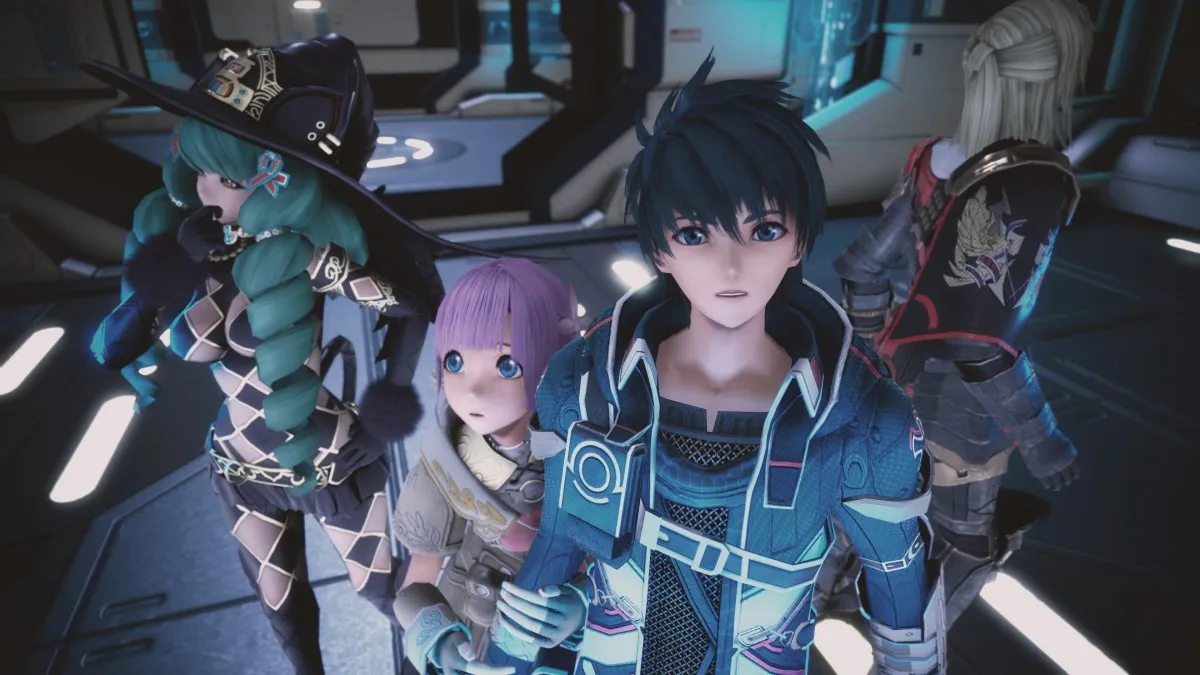
This article was originally published in Italian on Thegamesmachine.it in 2016.
It was clear from the very announcement in the pages of the Japanese magazine Famitsu that Star Ocean: Integrity and Faithlessness was born out of a desperate attempt to steer the series back onto the rails of decency—following the disappointing fourth installment and the departure of Yoshinori Yamagishi, the saga’s creator. What no one could have anticipated, defying all expectations, was that this fifth chapter would end up as the franchise’s endpoint—a silent death for the quintessential sci-fi series once championed by Enix. We may as well bid a final farewell to the Star Ocean franchise, or at least to its credibility.
I can’t comprehend how tri-Ace went from crafting expansive titles like Star Ocean 2 and Valkyrie Profile during the PS1 era to co-developing the (questionable) spin-off of Final Fantasy XIII and producing this Integrity and Faithlessness. This iteration aims to nod to the series’ Super Nintendo roots but comes off as superficial and poorly executed in nearly every aspect. The protagonists—walking clichés—are so two-dimensional that they fail to rise even slightly above their predetermined roles (and yes, even the sultry Fiore, provocative outfit notwithstanding, is quite bland). Meanwhile, the story feels like a fast-forwarded rehash of scenarios already explored in the first and third entries of the series. The lack—or near absence—of cinematic scenes to imbue the events with any emotional weight doesn’t help either, leaving most of the narrative to be conveyed through dialogues that feel overly familiar, delivered during the long treks between cities.
The decision to avoid overusing cinematic storytelling was a foundational aspect of this fifth installment’s development, with the end goal of offering a “gameplay-focused experience.” However, there’s a big difference between not telling a story and telling one poorly, and it would have been better to rethink how to achieve such a noble objective. Forcing players to wander within confined areas during unskippable dialogues, paired with MMO-style emoji animations that serve no purpose beyond aesthetics (and surreal ones at that), is far from the revolutionary approach I would have expected from the team that introduced voice acting to SNES JRPGs and delivered Star Ocean 3 on PS2 with progressive scan support.
As poorly written as it was, Star Ocean 4’s story at least retained the flavor of the space opera tri-Ace so ardently pursued during their Super Nintendo debut, complete with different planets to explore and the ability to customize your spaceship. For this “return to origins,” the Japanese developers chose to confine the plot to a single planet, oscillating between evocative, sprawling natural landscapes and brief detours into spaceships and secret labs in search of answers about the identity of Relia—a mysterious young girl with superhuman abilities who joins the two protagonists early in the game and around whom the entire narrative revolves.
The Private Actions—optional events that offer background details and insight into the protagonists’ personalities—remain intact. These are triggered in towns near inns, and the resulting dialogues can influence the friendship between Fidel, the main protagonist, and his companions, unlocking additional effects and narrative events toward the end of the adventure, much like in Star Ocean 3. However, the Private Actions are the only moments of meaningful interaction when it comes to party dynamics, which are entirely absent from the main narrative. That narrative, unfortunately, rushes forward at breakneck speed toward its conclusion.
At least Star Ocean: Integrity and Faithlessness feels like a tri-Ace title when it comes to its gameplay, soundtrack (with Motoi Sakuraba’s unmistakable style), and the strides made in the technical optimization of its battle system. The seamless transition from exploration to combat stands out: battles unfold directly on the map, with the playable area temporarily restricted to a circular zone. Up to seven characters can participate in combat simultaneously, an unprecedented figure that leads to absolute chaos in the later stages of the game. When powerful techniques light up the battlefield with explosive effects, it becomes nearly impossible to follow the action, often devolving into frantic button-mashing in the hopes that a string of light and heavy attacks will lead to victory amidst the whirlwind of screams, explosions, and flashing lights.
Unlike the recent Tales of Zestiria, which introduced similar concepts, the rotatable camera in Star Ocean: Integrity and Faithlessness rarely causes problems, allowing players to follow the action smoothly. The stacking bonus system also adds considerable depth to each skirmish.
That said, this fifth installment brings nothing new to the table, though the result is still somewhat enjoyable. The Reserve Gauge, a bar displayed on the right side of the screen during battles, lets players accumulate bonuses for coins, experience, and SP—the three fundamental metrics underpinning the game’s complex progression system. Filling the gauge depends on the quality of the player’s performance, rewarding skilled players with substantial experience, SP, and coin bonuses—provided they avoid getting knocked out or using the Reserve Rush, the typical “super moves” of JRPG protagonists. As always, tri-Ace’s gameplay rewards true skill rather than relying on lazy design choices like mandatory grinding (which is practically absent here if you stick to the main story path).
Despite the praise for its gameplay, the intricate mechanics are still undermined by the clunky main narrative. Players may encounter frustrating battles requiring the defense of specific party members, who are rendered helpless. In such cases, a single mistake can result in an unavoidable Game Over. These inexplicable spikes in difficulty seem to betray tri-Ace’s design philosophy.
The character progression system is just as multifaceted. The “roles” allow players to influence AI behavior (albeit slightly) and character stats, while combat techniques—unlocked via items like manuals—grow stronger with repeated use. Passive abilities, called specialties, range from identifying points of interest on the map for bonus items and experience to marking critical information on the navigation radar. These layers of customization ensure that no two players’ parties will be the same.
It’s easy to lose yourself in the gameplay systems of Star Ocean: Integrity and Faithlessness, especially once the forgettable main story reaches its conclusion, leaving space for optional quests and “mindless” crafting led by Welch, the eccentric recurring character, who returns here with her classic design. These secondary aspects shine far brighter than the main content—a recurring trend for the series. However, it would have been wise to integrate these features better to give the production more personality, as otherwise, it risks feeling bland and, in some ways, less compelling than a low-budget JRPG.
Visually, Star Ocean: Integrity and Faithlessness is a mixed bag, with moments of brilliance offset by glaring issues. The expansive environments, particularly the plains and cities, are impressive in scale but feel lifeless and devoid of interactivity, more like bare film sets than vibrant worlds. A glaring issue is the lack of collision detection between character models, allowing you to “pass through” NPCs—even during cinematic scenes. This problem aligns with the game’s overall lackluster presentation, including minimal variety in NPC models (village residents look nearly identical) and a near-complete absence of explorable interiors. Performance issues are also present, with noticeable frame rate drops when entering towns or during battles, particularly on the PS4 version, which struggles to maintain its target 60 FPS.
Ultimately, Star Ocean: Integrity and Faithlessness is Square Enix’s clumsy attempt to recapture the spirit of the series’ earlier entries, pre-dating the disastrous fourth installment. Unfortunately, the lack of personality and boldness in the writing, combined with technical problems and a deep yet flawed gameplay system, makes this fifth chapter appealing only to die-hard fans. For those willing to revisit Welch’s antics and dive into crafting and combat to defeat the Ethereal Queen, there may be some value here. Beyond that, however, Integrity and Faithlessness offers little to discover.


